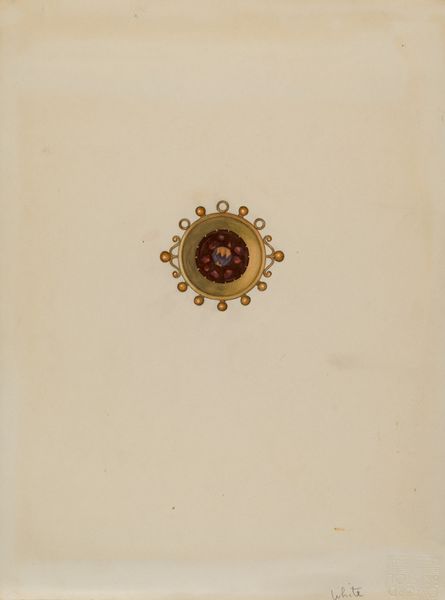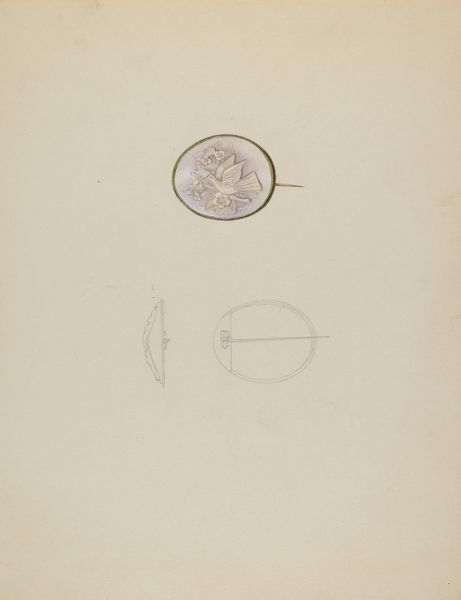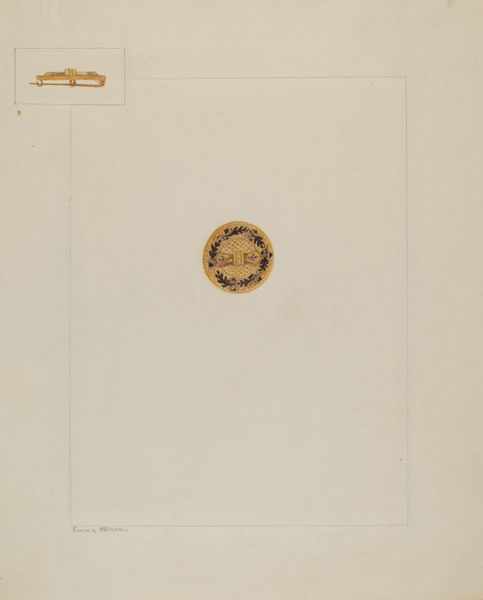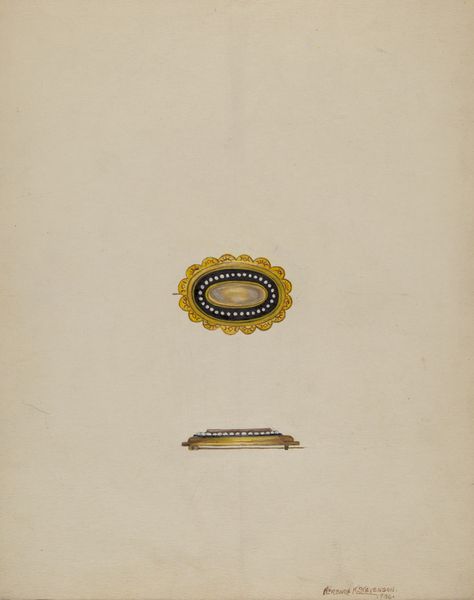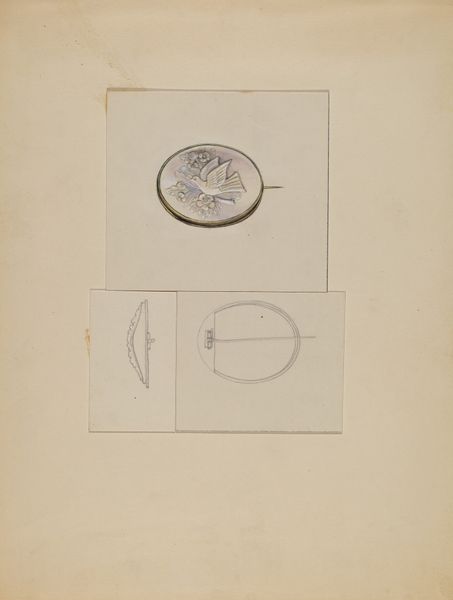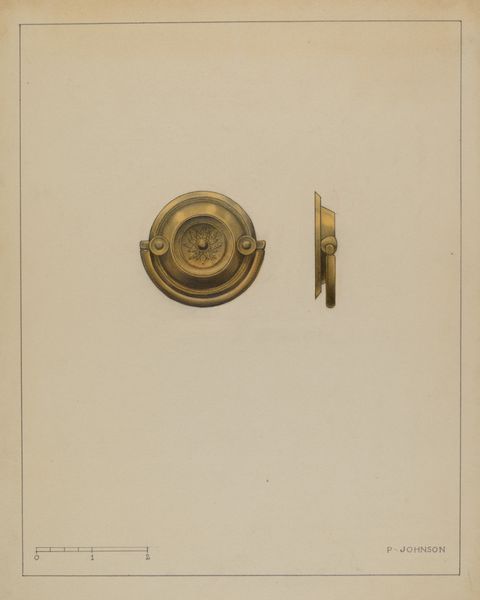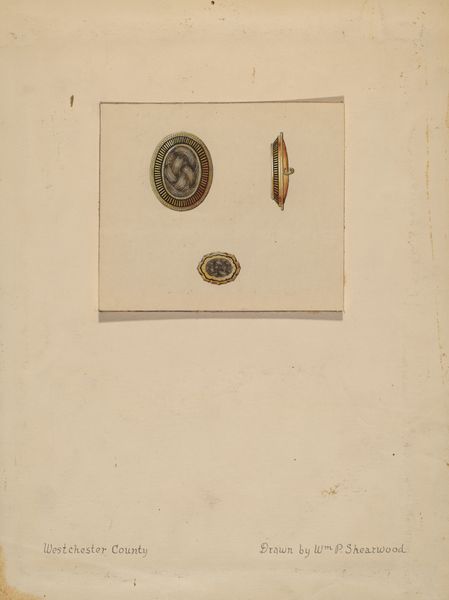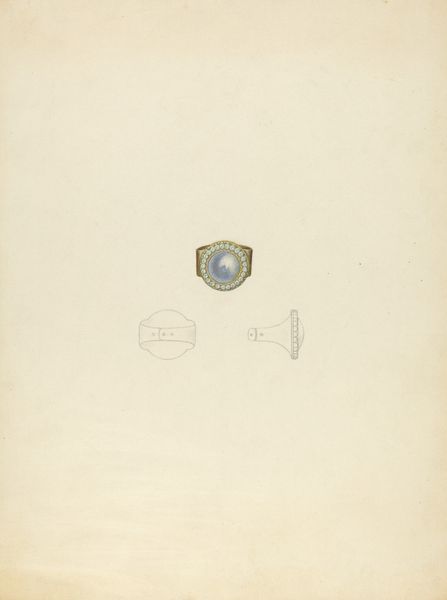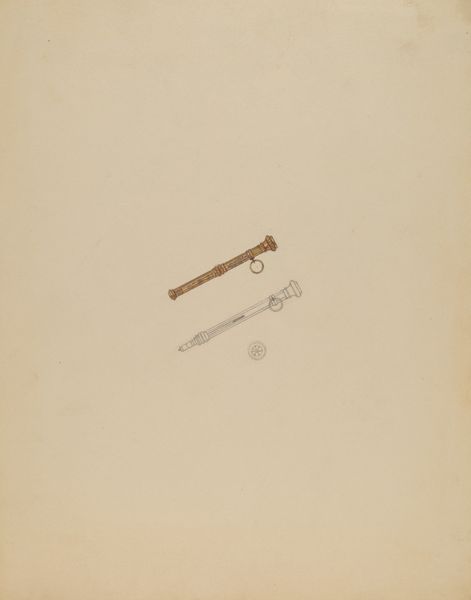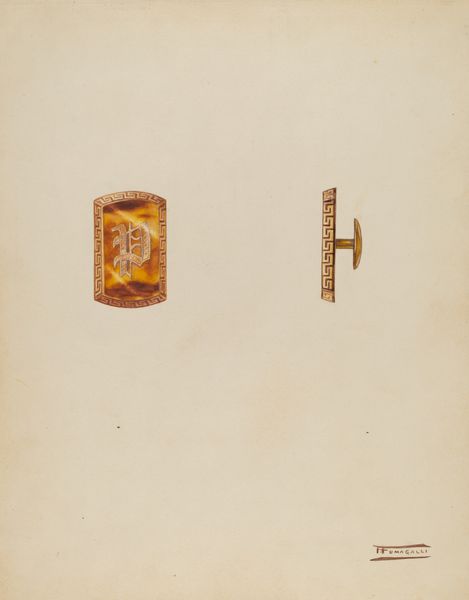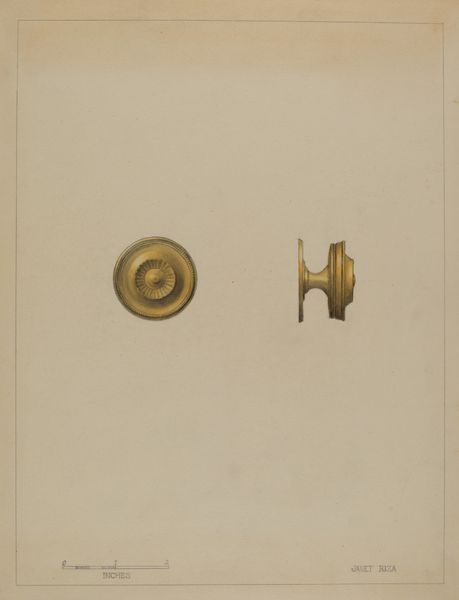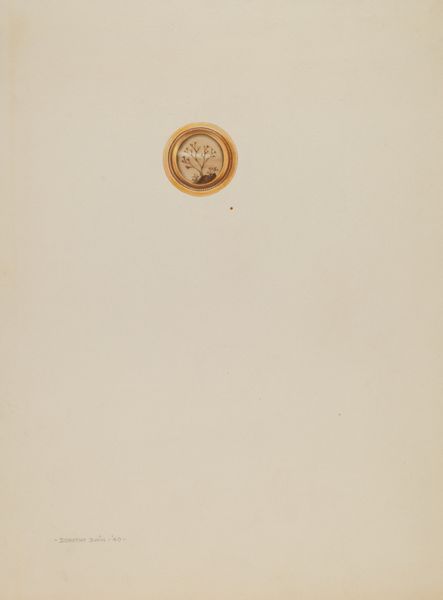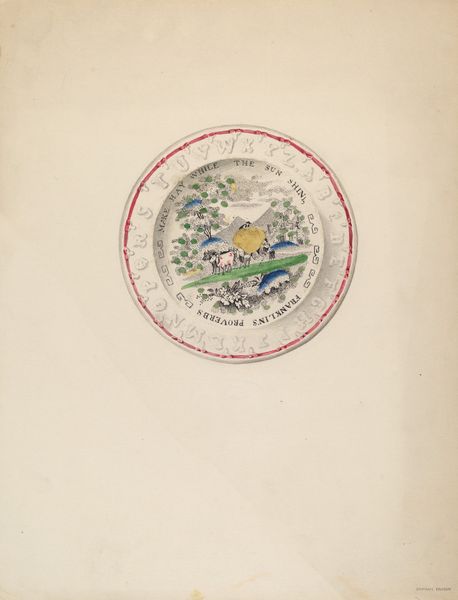
drawing, watercolor
#
drawing
#
water colours
#
watercolor
#
ceramic
#
academic-art
Dimensions: overall: 28.2 x 22.9 cm (11 1/8 x 9 in.)
Copyright: National Gallery of Art: CC0 1.0
Editor: This is George Seideneck's "Stick Pin," a watercolor drawing from around 1937. It's so delicate, almost fragile in its presentation. What kind of statement do you think Seideneck was making, rendering such an everyday object with such care? Curator: I think it pushes us to consider the value we place on different kinds of objects. During the late 1930s, anxieties about consumerism and class were quite prevalent. This watercolor elevates a seemingly mundane accessory. Could it be a subtle commentary on the allure, and perhaps the emptiness, of bourgeois aspirations? Consider the letters that adorn the perimeter. Are they legible? And what could the broken image inside represent? Editor: I can’t quite make them out…and the image is too abstract. So you're saying that by isolating and magnifying this single item, Seideneck prompts us to examine its cultural significance? Curator: Precisely. Think about the symbolism embedded within adornment itself – status, identity, belonging. How does the context of the Great Depression, with its stark inequalities, influence your reading of this image? Perhaps it reveals the illusion of value during times of struggle? Editor: That’s a perspective I hadn't considered. It almost feels critical now, maybe even a bit subversive for its time. Curator: Subversion can manifest in quiet ways. By depicting something so small with such meticulous detail, Seideneck encourages a re-evaluation of material culture itself. What do we choose to cherish, and why? Editor: I see it differently now, it’s not just a drawing of a pin, but a quiet questioning of value itself. Curator: And perhaps the power dynamics embedded within those systems of value. These older pieces often prompt modern re-interpretations to explore our own social narratives. Editor: Thank you. This has truly transformed how I understand this seemingly simple drawing.
Comments
No comments
Be the first to comment and join the conversation on the ultimate creative platform.
